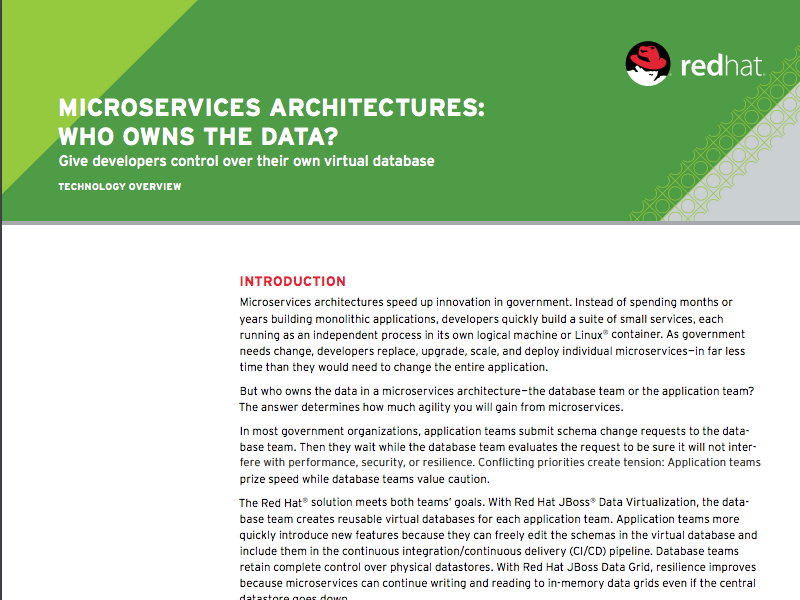Data quality isn't just a technical issue: It impacts an organization's compliance, operational efficiency, and customer satisfaction.
A discussion on Generative AI: Join industry experts as they talk about how GenAI has transformed the software development space.

Microservices architectures speed up innovation in government. Instead of spending months or
years building monolithic applications, developers quickly build a suite of small services, each
running as an independent process in its own logical machine or Linux® container. As government
needs change, developers replace, upgrade, scale, and deploy individual microservices—in far less
time than they would need to change the entire application.
But who owns the data in a microservices architecture—the database team or the application team?
The answer determines how much agility you will gain from microservices.
In most government organizations, application teams submit schema change requests to the database team. Then they wait while the database team evaluates the request to be sure it will not interfere with performance, security, or resilience. Conflicting priorities create tension: Application teams
prize speed while database teams value caution.
The Red Hat® solution meets both teams’ goals. With Red Hat JBoss® Data Virtualization, the database team creates reusable virtual databases for each application team. Application teams more
quickly introduce new features because they can freely edit the schemas in the virtual database and
include them in the continuous integration/continuous delivery (CI/CD) pipeline. Database teams
retain complete control over physical datastores. With Red Hat JBoss Data Grid, resilience improves
because microservices can continue writing and reading to in-memory data grids even if the central
datastore goes down.